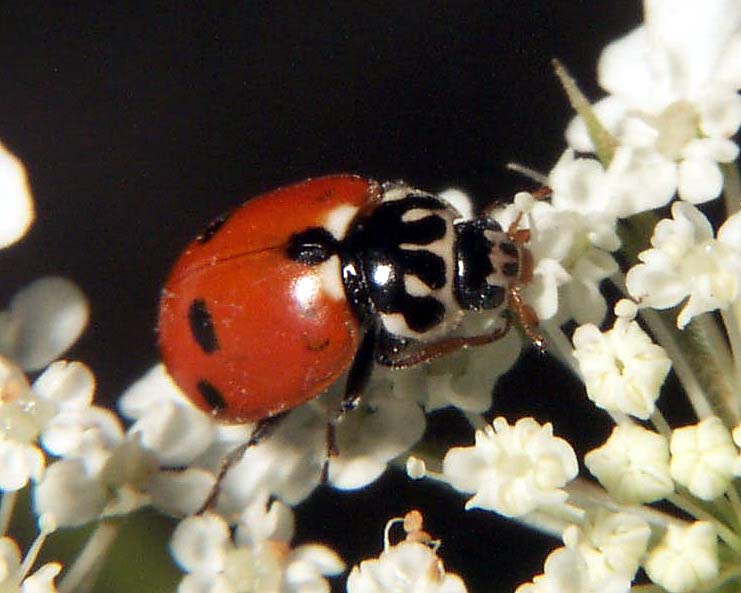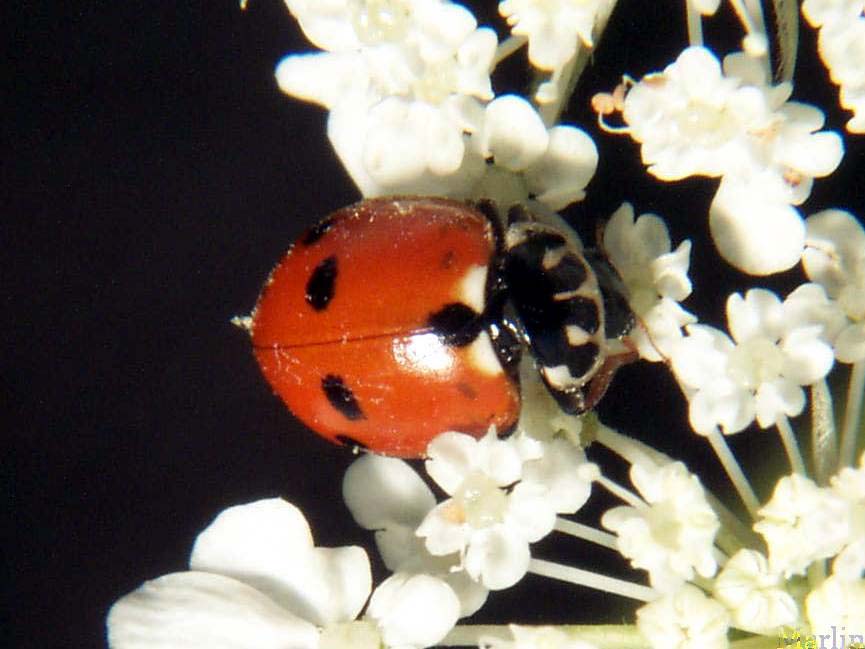 |
Variegated Lady Beetle Hippodamia variegata Family Coccinellidae – Ladybird Beetles These beneficial insects are seen on water hemlock flowers. They are feeding on pollen. |
Custom Search
|
 |
Beetles Main | Beetles Index | Longhorns | Leaf Beetles | Soldier | Blister | Lady | Scarab
|
Lady Beetles, also called ladybugs or ladybird beetles, belong to the beetle family Coccinellidae. As insects go, they are a very beneficial group, being natural enemies of many insects, especially aphids and other critters that damage plants by feeding on their sap. A single ladybug can consume vast quantities of aphids in its lifetime, perhaps as many as 5,000 or more. There is a brisk business in commercial ladybugs for aphid control, and some of the species found here in North America are actually "invasives" brought from Europe or Asia for such purpose. Coccinella septempunctata, the seven-spotted ladybug, sometimes called ‘C-7', is a medium-sized, orange beetle with seven black spots. It is a European species that was introduced into the US to aid in managing some aphid pests. Harmonia axyridis, the Multicolored Asian lady beetle, was introduced to North America many times, finally taking hold and becoming established in the 1980's. This invasive has become far and away the most numerous of the Coccinellids here in the midwest, and they are becoming one of the most annoying insect pests, invading homes to overwinter, much as the box elder bug. |

|
Adult ladybugs have convex, hemispherical shaped elytra (the hardened wings used to cover the soft flying wings underneath) that can be yellow, pink, orange, red, or black, and usually are marked with distinct spots. This is a type of warning coloration (aposematic coloring), thought to discourage predators. Lady beetles also have another defense: an odorous, noxious fluid that seeps out of their leg joints when the insects are disturbed.
Ladybugs, both adults and larvae, are well-known primarily as predators of aphids (plant lice), but they prey also on many other pests such as soft-scale insects, mealybugs, spider mites and eggs of the Colorado Potato Beetle and European Corn Borer. A few feed on plant and pollen mildews. One larva will eat about 400 medium-size aphids during its development to the pupal stage. An adult will eat about 300 medium-size aphids before it lays eggs. About three to ten aphids are eaten for each egg the beetle lays. More than 5,000 aphids may be eaten by a single adult in its lifetime. The lady beetle's appetite and reproductive capacity allow it to rapidly clean out its prey. |
| Tree Encyclopedia / North American Insects & Spiders is dedicated to providing scientific and educational resources for our users through use of large images and macro photographs of flora and fauna. |
Order Coleoptera: Beetles are the dominant form of life on earth: one of every five living species is a beetle. Coleoptera is the largest order in the animal kingdom, containing a third of all insect species. There are about 400,000 known species worldwide, ~30,000 of which live in North America. Beetles live in nearly every habitat, and for every kind of food, there's probably a beetle species that eats it. |